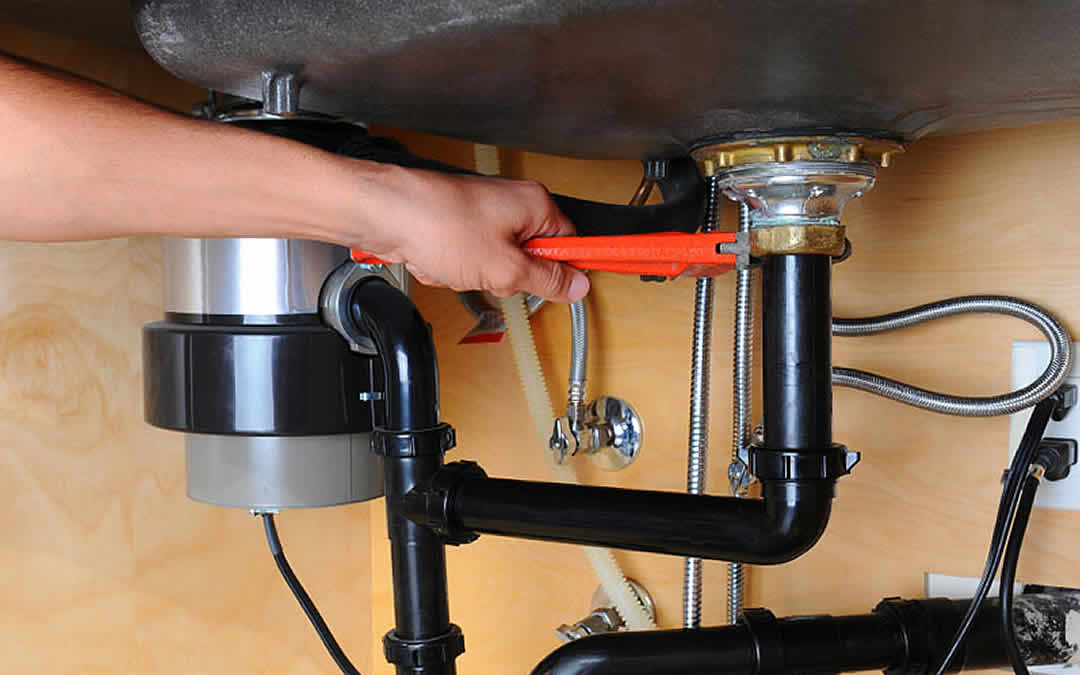Swift Solutions for Fixing a Dripping Waste Disposal Unit
Swift Solutions for Fixing a Dripping Waste Disposal Unit
Blog Article
This article in the next paragraphs involving The Handy Guide To Fixing Your Garbage Disposal Leaking is exceedingly remarkable. You should see for yourself.

Garbage disposals are crucial kitchen home appliances that aid in throwing away food waste efficiently. Nonetheless, a leaking waste disposal unit can be a discouraging and messy problem to take care of. Fortunately, lots of leaks can be taken care of easily with a few straightforward steps. In this short article, we will certainly go over just how to fix a leaking garbage disposal effectively.
Introduction
Waste disposal unit are mounted under kitchen area sinks and are designed to shred food waste right into smaller pieces, permitting it to pass through the plumbing system quickly. While these tools are generally dependable, leaks can take place with time as a result of damage, loosened links, or damages to the system.
Typical Root Causes Of Leaks in Waste Disposals
Worn Seals and Gaskets
Seals and gaskets play a crucial duty in avoiding water from leaking out of the garbage disposal. In time, these elements can deteriorate, leading to leakages around the disposal system.
Loose Connections
The links in between the garbage disposal and the pipes system can come to be loose over time, creating water to leak out throughout procedure.
Fractures or Holes in the Disposal Unit
Physical damages to the garbage disposal, such as splits or holes in the real estate, can also cause leaks.
Identifying the Resource of the Leak
Before trying to repair a dripping waste disposal unit, it is vital to recognize the source of the leakage. This can commonly be done with visual inspection or by performing basic tests.
Visual Inspection
Evaluate the waste disposal unit unit meticulously for any indications of water leak. Pay very close attention to areas around seals, gaskets, and link factors.
Checking for Leaks
One method to examine for leakages is by running water with the disposal system and checking for any visible signs of leak.
Devices and Materials Needed for Dealing With a Dripping Garbage Disposal
Before starting the fixing procedure, gather the essential devices and materials, including a screwdriver, flexible wrench, plumbing professional's putty, substitute seals or gaskets, and epoxy or patching material for fixing cracks or openings.
Step-by-Step Guide to Taking Care Of a Dripping Garbage Disposal
Shut off the Power
Before attempting any kind of repair work, make certain that the power to the garbage disposal system is switched off to prevent the risk of electric shock.
Find the Leakage
Identify the precise place of the leakage and establish the cause.
Tighten up Connections
Utilize a wrench to tighten up any loosened links between the disposal unit and the pipes system.
Change Seals or Gaskets
If the leakage is due to used seals or gaskets, get rid of the old components and replace them with new ones.
Patching Fractures or Openings
For splits or openings in the disposal unit, use epoxy or a suitable patching product to secure the broken location.
Examining the Garbage Disposal After Repair Work
As soon as the repair work is full, test the waste disposal unit by running water through it to make certain that the leakage has been fixed.
Preventive Maintenance Tips to Stay Clear Of Future Leaks
To stop future leaks, it is essential to do normal maintenance on your waste disposal unit. This includes maintaining it clean, preventing placing non-food products or tough objects down the disposal, and regularly checking for leakages or various other issues.
Final thought
Finally, fixing a leaking waste disposal unit is a reasonably straightforward process that can be finished with standard tools and materials. By following the steps described in this post and exercising preventative maintenance, you can keep your waste disposal unit in good working problem and stay clear of pricey fixings in the future.
What to Do About a Leaking Garbage Disposal
A leaking garbage disposal often goes unnoticed until you confront a sopping cabinet, a foul-smelling puddle, or an audible drip-drip-drip from the unit. The fix can be frustrating, too, because the leak can stem from a number of components in the system. Fortunately, with a little sleuthing, you can zero in on the leak and—depending on the exact location—stop the icky oozing and repair the component that caused it. Worst case scenario, if it turns out that the garbage disposal must be replaced, installing a new one is a reasonable do-it-yourself task for those with basic plumbing skills. Read on to keep the cash you’d otherwise hand over to a pro.
Prepare to find the leak
Prior to testing the garbage disposal for leaks, unplug it at the wall outlet and turn off the power from the breaker box to prevent electrical shock. Then insert a watertight sink stopper into your sink drain and wipe the unit dry with a clean cloth. In any handy container, mix a few drops of food coloring into a few cups of water, and pour the dyed water onto the sink stopper to help you locate the leak.
Investigate the source
the top, where the disposal meets the sink drain the side, where the dishwasher hose or main drain pipe connects to the disposal or the bottom of the unit Inspect each of these locations while gliding a light-colored rag over the unit; the dyed water will readily show on the rag and reveal the location of the leak. If a leak isn’t immediately apparent, remove the sink stopper and pour a few more cups of dyed water down the sink drain, then check for leaks again. Leaks near the top of the unit are more likely to show themselves while the sink is plugged, while side and bottom leaks are more noticeable while the sink is unplugged.
The metal sink flange that sits directly inside the sink drain is typically sealed around the top with plumber’s putty (a clay-like sealant) and then secured from under the sink with bolts. If the plumber’s putty deteriorates, or the bolts loosen, the flange can no longer form a watertight seal between the sink drain and the disposal—which could cause a leak at the top of the unit.
To reseal the leaky flange, you must first detach the garbage disposal. Start by loosening the screws securing the main drain pipe to the disposal, then loosen the screws in the metal clamp securing the dishwasher hose to the disposal and detach the drain pipe and dishwasher hose from the disposal. Loosen the screws in the mounting ring that connects the disposal to the metal mounting assembly beneath the sink, then pull down the disposal and carefully set it on a clean, dry surface. Loosen the bolts in the mounting assembly with a wrench, then pull down the mounting assembly and set it near the disposal.

I found that blog posting about Tips on Fixing a Leaking Garbage Disposal while doing a lookup on the internet. Sharing is caring. Helping people is fun. Thanks for your time. Please come by our website back soon.
Book With Us Today! Report this page